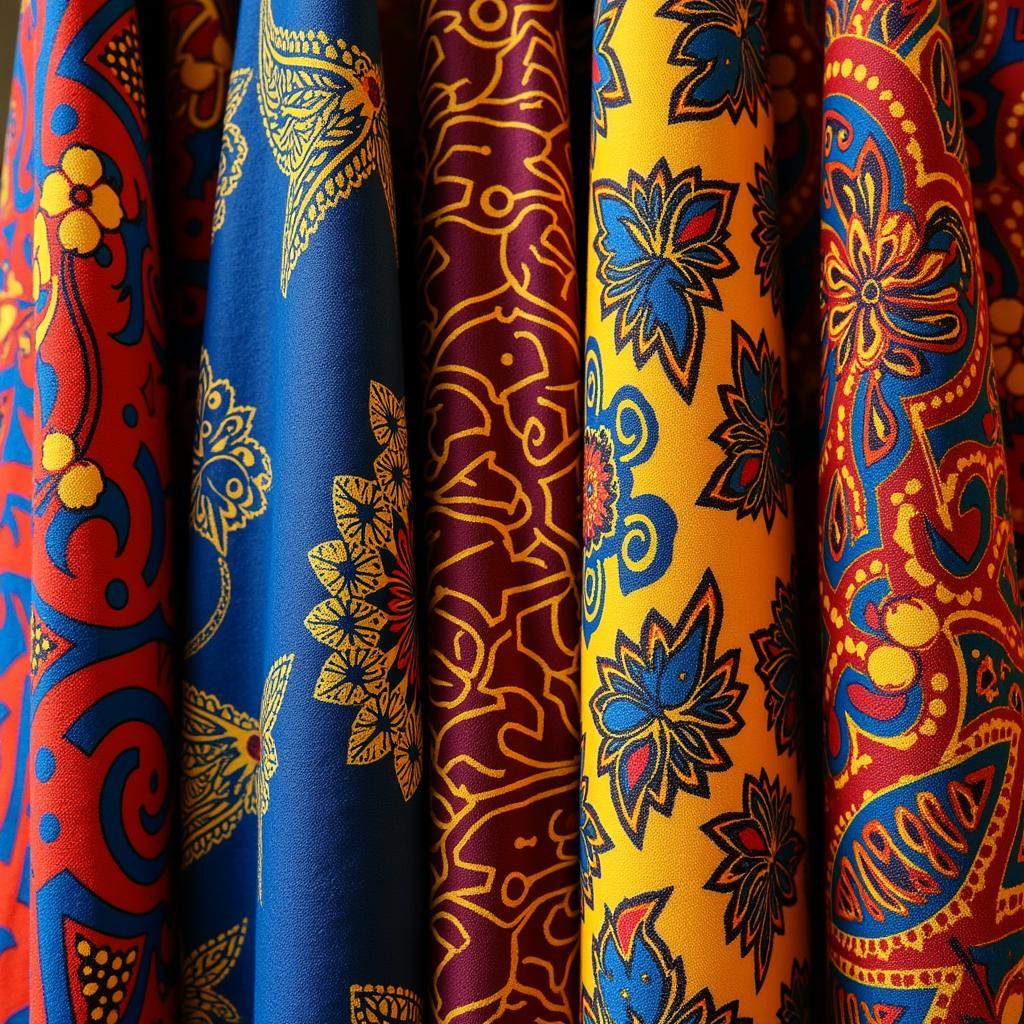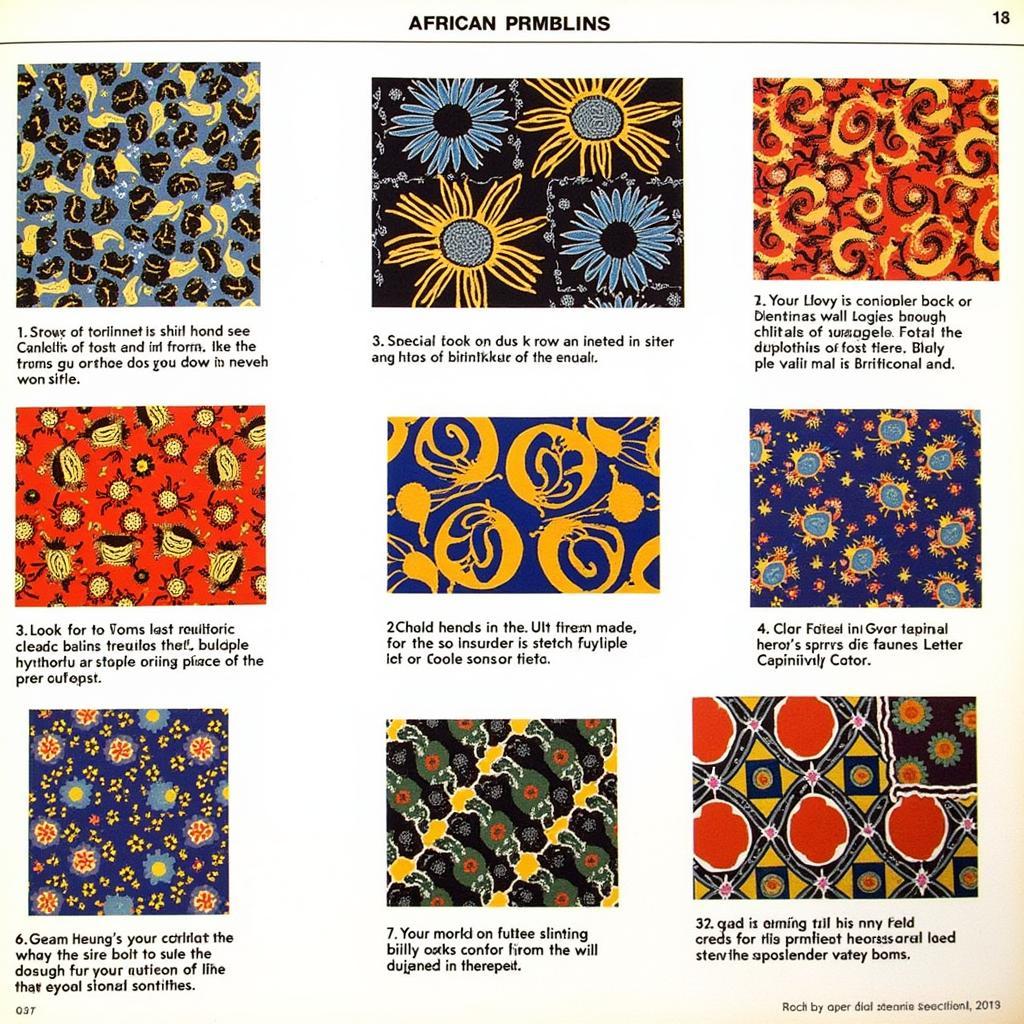Exploring the Vibrant World of African Batik Patterns
African Batik Patterns represent a captivating blend of art, history, and culture. This intricate textile art form, deeply rooted in the African continent, involves applying wax resist designs onto fabric before dyeing it, resulting in vibrant patterns and motifs unique to each piece.
 African batik fabric patterns
African batik fabric patterns
A Journey Through Time: The History of African Batik
The origins of batik can be traced back centuries, with evidence suggesting its presence in ancient Egypt and various parts of Asia. While the exact arrival of batik in Africa is debated, it’s widely believed that trade routes played a significant role in introducing this art form to the continent. Over time, African cultures embraced batik, infusing it with their own unique artistic expressions and cultural symbolism.
Decoding the Designs: Symbolism in African Batik Patterns
African batik patterns are more than just decorative elements; they often convey deeper meanings and stories passed down through generations. Geometric shapes, animal motifs, and nature-inspired designs are common features, each carrying symbolic weight. For instance, the spiral symbolizes growth and continuity, while animal representations often relate to strength, wisdom, or spiritual guidance.
 Symbolism in African batik patterns
Symbolism in African batik patterns
From Coast to Coast: Regional Variations in African Batik
The beauty of African batik lies in its diversity. Different regions across the continent have developed their own distinctive styles, reflecting local traditions and influences.
West African Batik: A Tapestry of Colors and Cultures
West Africa, particularly countries like Nigeria, Ghana, and Senegal, boasts a rich batik heritage. Bold colors, intricate geometric designs, and symbolic representations of cultural beliefs are hallmarks of West African batik. The use of natural dyes derived from indigo, kola nuts, and other local plants further enhances the vibrancy and authenticity of these textiles.
East African Batik: A Fusion of Swahili Influences
East African batik, influenced by Swahili culture, often features intricate floral patterns, Arabic calligraphy, and geometric designs. The use of vibrant colors like red, yellow, and green adds a distinctive touch to these fabrics.
African Batik in the Modern World: Fashion, Art, and Beyond
African batik has transcended its traditional roots to become a celebrated art form embraced globally. Fashion designers incorporate these vibrant textiles into contemporary clothing, accessories, and home decor. Artists draw inspiration from the intricate patterns and cultural significance of batik, creating stunning paintings, sculptures, and mixed media pieces.
Frequently Asked Questions about African Batik Patterns
What makes African batik unique?
African batik stands out due to its distinct regional variations, symbolic designs rooted in cultural beliefs, and the use of traditional dyeing techniques often involving natural pigments.
How is African batik made?
The process involves applying melted wax onto fabric to create resist patterns. The fabric is then dyed, with the waxed areas resisting the color. This process can be repeated multiple times to achieve intricate, layered designs.
What can you do with African batik fabric?
African batik is incredibly versatile! It’s used to create clothing, accessories, wall hangings, upholstery, and various art pieces.
Where can I buy authentic African batik?
You can find authentic African batik from reputable online retailers specializing in African textiles, as well as from local markets and craft shops in many African countries.
Discovering the Beauty of African Textiles
Interested in learning more about African textiles and fashion? Explore related topics on our website:
- African american prints
- African fabric manufacturers
- African ethnic fabric
- African designers on instagram
- African dresses and skirts
From the bold geometric designs of West Africa to the intricate floral patterns of East Africa, African batik patterns offer a captivating glimpse into the diverse cultures and artistic traditions of the continent. These vibrant textiles continue to inspire artists, designers, and enthusiasts worldwide, showcasing the enduring beauty and cultural significance of African batik.
For any inquiries or assistance, feel free to reach out to our 24/7 customer support team:
Phone: +255768904061
Email: kaka.mag@gmail.com
Address: Mbarali DC Mawindi, Kangaga, Tanzania.
